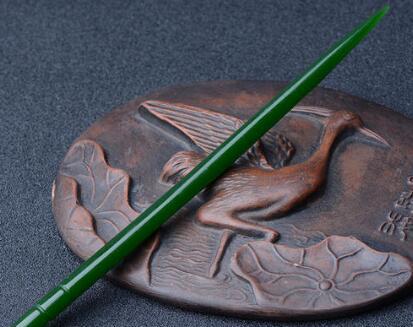The archaeological team dug up the tomb of emperor, unearthed a male utensil, and shouted: I want to pay him justice
To judge the merits of a historical figure, basically we must read various history books and examine the image of an ancient figure from the above written records. In fact, the history recorded in the history books is not necessarily objective and accurate. The reason is simple. Historians who compiled the "Chronicle of History" throughout the ages basically succumbed to the emperor's obscenity and only chose good texts for the dynasty, while the historians of the previous dynasties "chose the bones of the egg", so as future generations, it is difficult for us to obtain real historical data from it.

Fortunately, the profession of archaeology has emerged in modern society. By excavating ancient tombs and ruins, the archaeological team excavated ancient artifacts in the form of antiquities, enabling people to look for the true history of the past with their eyes from historical sites and artifacts. With the continuous advancement of archaeology, many historical figures recorded in history books may be "out of order".
In the Book of Han by the Eastern Han historian Ban Gu, Liu He, who reigned for only 27 days in the Western Han Dynasty, is portrayed as a chaotic demon king who did nothing wrong. He called it "from the 27th day of receiving the seal, the envoys solemnly issued an edict that afternoon, ordering a total of 127 events to be issued by the official offices." ”
According to Ban Gu, Emperor Liu He of the Han Dynasty did more than one thing, and he had thousands of bad things in less than a month after he took office. It's really hard to write. Because of Ban Gu's verbal criticism and penmanship, the reputation of the historically abandoned Emperor of the Han Dynasty has been discredited for thousands of years, and his image of a faint ruler can be said to be deeply rooted in the hearts of the people.
In 2015, an archaeological team excavated Liu He's mausoleum in Kansai Village, Nanchang City, Jiangxi Province. The size of the tomb and the number of artifacts unearthed have created the most significant archaeological discovery in the history of Chinese archaeology in the past 30 years. Archaeologists have found a very unique male artifact among the thousands of artifacts unearthed from the Liuhe Tomb.
It's a jade hairpin pen, just like the hairpin used by ancient women. The hairpin pen is an ornament worn on a man's head. However, the pen cannot be worn by ordinary people, and it is mainly an ornament for scribes and scholars. Ancient literati usually used this pen to write and record at any time. That is to say, the person who wore the hairpin pen in ancient times must be a scholar with a strong sense of books.
In short, putting the hairpin pen into his tomb as a funerary object shows that Emperor Wudi of han was very fond of the hairpin pen before he died. In this way, Liu He is not a "bad thing" in the Book of Han, but a gentle person who loves to read and write. To this end, archaeologists appeal, "History should be fair to him!" ”